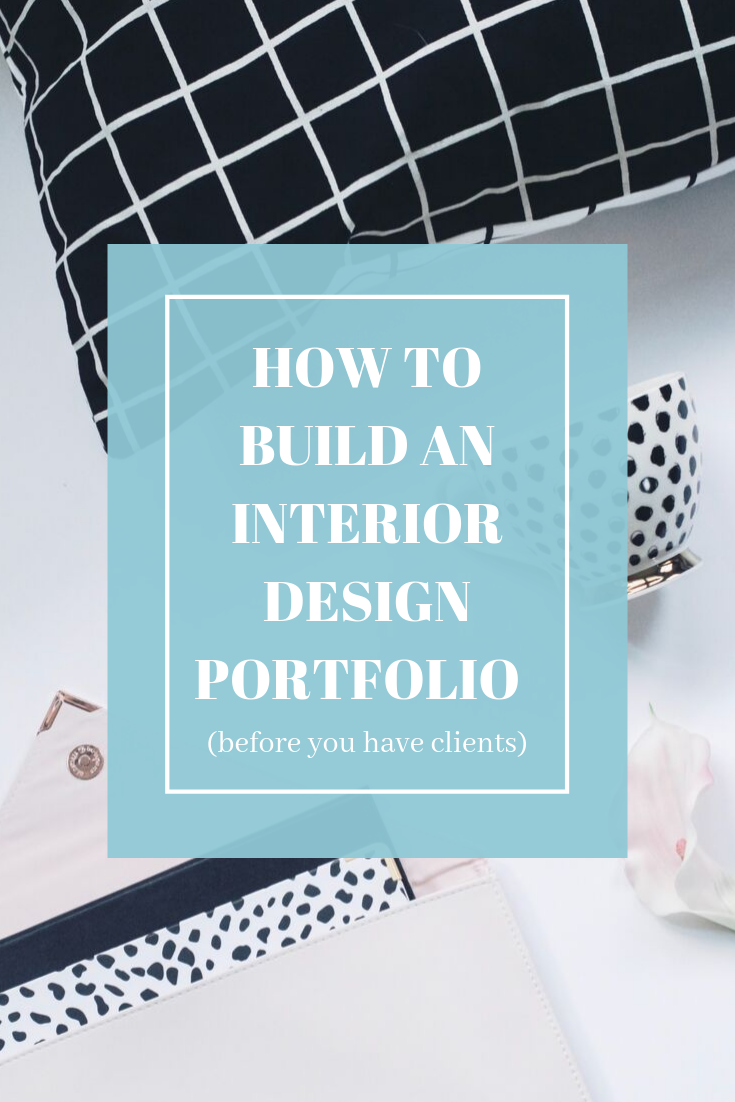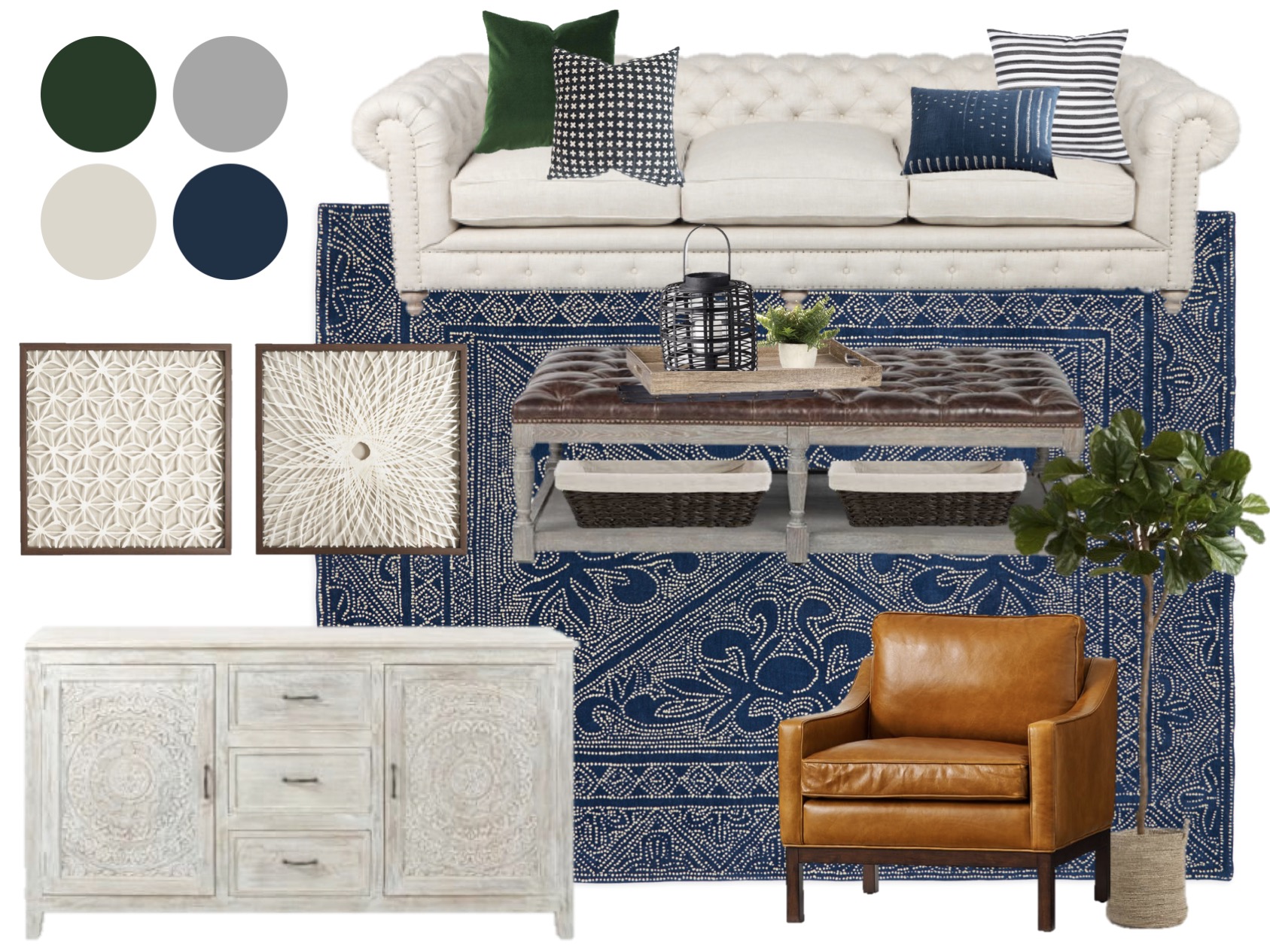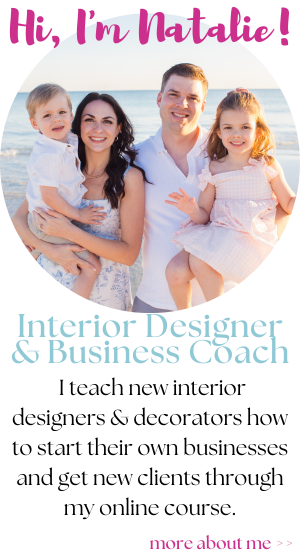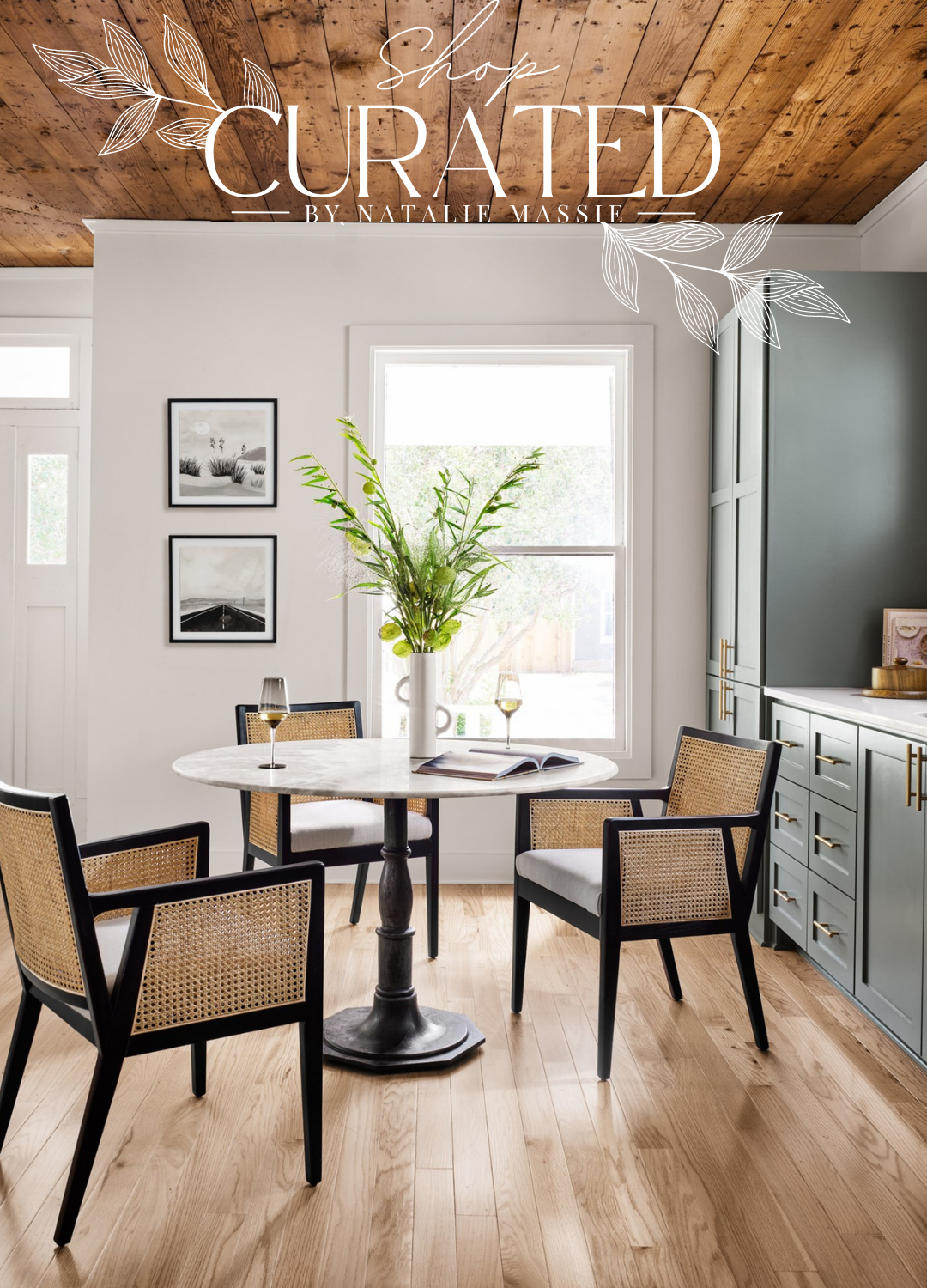

Let’s be honest. Design clients don’t want to know your credentials, they want to see your work. When they are paying top dollar to hire a designer they want to make sure they are getting someone who knows what they’re doing.
A client expects you as the designer to know how to mix patterns/colors, have the best resources for beautiful and quality furniture/accessories, manage the selections process, make sure the space flows well and pieces are the right scale, and that you consider their family’s needs when designing (ex. kid-friendly fabrics).
When you’re first starting out as a designer it can be difficult to get your foot in the door with a client if you don’t have a portfolio. Here are my top ways to create a portfolio before you have your first client:

1. Take Photos of Your Own Home
In an ideal world you will have a beautiful home that’s designed from top to bottom and perfectly embodies your design style; however, this isn’t the case for most designers. When most designers are first starting out think they don’t have a home worthy of photographing for their portfolio (hello Ikea furniture).
I completely understand this fear. When I was first starting out as a designer I was broke as a joke working 2 jobs supporting my family while my husband was in school. Most of the furniture we owned was 2nd hand or from a thrift store and it didn’t embody my design style. I knew I needed a portfolio but didn’t want to show my home.
This is where you have to get creative. Instead of taking overall shots of your space, try finding little vignettes that you could photograph. For example, pair 3 pillows together and get an up close photo showing how you can pattern play. Accessorize your bookshelf, floating shelves, fireplace mantle, coffee table, etc. and take an up close photo to show your ability to accessorize.
Take a look at some of your favorite home bloggers photos a little more closely. I bet you’ll notice a few accessories continuously make an appearance throughout. They are strategically moving their best accessories from room-to-room every time they take photos. Take a pointer from them and do the same for your portfolio photos – most people will never notice you’re using the same accessories over and over.

2. Ask Friends If You Can Design a Space
Now this is a tricky situation. Designing for friends can sometimes turn into a bit of a nightmare as they may not value your time as you will likely be working for free. If you have a friend who is willing to have you help them with your home make sure you set up some clear boundaries from the beginning.
Make sure when you initially reach out that you are very clear about expectations. Let them know you will be taking photos of the space before/after and that you will not be spending your own money on items. It may be a good idea to also set a time limit on the project like, “I would like to offer 3 hours of design help if you will allow me to design and photograph your home.”
Ideally chose a friend who has a budget for the space they want to redecorate. This will allow you to treat them as you would a paying client and get some experience in the full design process. If none of your friends are willing to spend money on the redesign of their space, then go to plan B.
Chose a friend who already has great pieces in their home but that would let you rearrange the furniture, hang some art, relocate accessories, etc. You could also bring your own items from home to stage the room for photos (but again, make sure your friend knows the items will be going back home with you). Make sure you are actually making a significant change to the room and not just taking credit for your friend’s good taste.

3. Work for Free or Discounted Rate
Most designers will do a little work for free or discounted when they are first getting started. Similar to the above scenario, you will be offering your services for free but to a wider audience. If you don’t have any friends that you can reach out to, try putting out an offer on social media. For example, write a Facebook post on your personal page asking if anyone is looking to redecorate and would like some guidance from you.
Make it very clear that you would like to offer your services for free or at a discounted rate but that they would need to be willing to invest in new pieces. Again mention that you are just building up your portfolio and that you are only offering this to 3 people who are the right fit. By limiting the number of spots for this offer, people will understand you are going to be picky about the selection process and will likely take the process more seriously and understand your value more.
Ask those interested to send you photos of the space they want to redesign, a link to their inspiration board on Pinterest and most importantly their budget. Again, reiterate that you appreciate them applying to work with you for free but you do have limited spots so to please do their best to answer your questions.
Once you narrow it down to the people you want to work with, give them a clear number of hours you will provide for free or at your discounted rate. You will need to gauge the amount of design time you will provide by the size of the project. If someone wants to do a full room design and has a good budget then it will be a good portfolio builder, so you can offer them 10 free hours of design time. If someone just needs some new pillows or accessories and has the budget to do so, maybe you offer 3 hours which includes your shopping time and arranging time.
The reason you want to set a cap on your hours is so you are setting the expectations from the beginning. When someone is getting free or discounted design help they will likely start asking you about other rooms in the process (“while you’re out shopping will you also look for some art for this room”). When this happens you can say “since we have a limited number of hours I allotted for this space, let’s focus on finishing this first then we can chat about other spaces later.”
After you’ve completed the room you can decide if you want to continue working with them. If they were a good client to work with and you got some great photos for your portfolio then you can decide if you want to do more work for free or give them your hourly rate to complete the next phase (which I highly recommend).

4. Create a Digital Portfolio
In my opinion, this is the best way to build your portfolio. By creating digital images you can showcase your design talents and give a clear representation of what clients will receive from you. You can also attract the clients you want to work with my creating rooms you would want to design. For example if you love the modern farmhouse style, build some boards around that style and you will attract people who want that from you!
I teach all of this in my online design course and we dive into setting your prices and I walk you through step-by-step how to create digital design boards. Click below to learn more about how you can launch your design business in just a few weeks (without needing a degree) with my online course:


